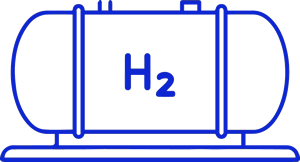Hydrogen’s intrinsic properties make it safer than jet fuel
Hydrogen 86 years ago in a blimp has no bearing on the safety of modern hydrogen airplanes
Hydrogen leaked from a lifting “cell” and went completely undetected
Hydrogen is monitored using on module safety systems such as ventilation, leak detection, and temperature / pressure sensing
A spark coming in contact with a flammable concentration of hydrogen in air likely caused the fire
Hydrogen is stored in cryogenic tanks to prevent flammable concentration in air (4%-74%).
Carries ~ 16,600 kilograms of hydrogen to provide lift
Carries ~400 kilograms of hydrogen for only propulsion & power
The Hindenburg was not the first hydrogen airship accident - these aircraft had a dubious safety record prior to 1937
Modern aircraft are rigorously certified to ensure catastrophic failures are virtually impossible - a hydrogen aircraft will be no different
Hydrogen cars which are on the roads in California have undergone extensive testing and have proven safety record









